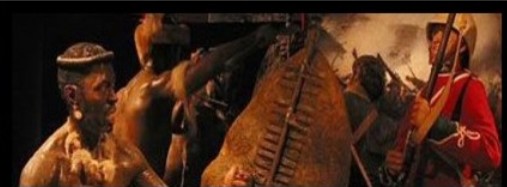| Latest topics | » The Pictorial World - March 15th 1879 Yesterday at 1:13 pm by ben2000 » The lost diary of Pvt James Owen Thu Jul 25, 2024 12:03 pm by miklew » Last of the 24th at Isandhlwana Wed Jul 24, 2024 6:16 pm by John Young » What was the uniform of field marshals/generals in the zulu war? Mon Jul 22, 2024 6:53 am by John Young » Henderson and the NNH at Rorke's Drift  Sat Jul 20, 2024 12:17 pm by SRB1965 » Capt. D. Hayes 1/3rd Regt., NNC Thu Jul 18, 2024 11:11 am by Julian Whybra » The Wrecked Camp Wed Jul 17, 2024 4:33 pm by Julian Whybra » Private N/N John Robert Branch 90th Regiment and his discovered diary Mon Jul 15, 2024 8:53 pm by 1879graves » Private John Scott 24th Regiment a fugitive at large Sun Jul 14, 2024 12:06 pm by 1879graves » 90th foot sgt T. Collins 214 Sun Jul 14, 2024 10:57 am by johnman » Baron Von Steitencron Wed Jul 10, 2024 3:10 pm by Julian Whybra » Sgt Joseph Windridge, Defender of Rorke's Drift - Memorial Tue Jul 09, 2024 3:15 am by 90th » Writing advice Sun Jul 07, 2024 4:04 pm by Julian Whybra » South Africa 1877-79, 1 clasp, 1877-8-9 (4389 Fr. Sergt. S. Smith. O/2. Bde. R.A.) Sun Jul 07, 2024 9:30 am by rai » The trashing of the Zulu monument to the brave warriors at Isandlawana March 12, 2024 has been blamed on scrap metal scavengers. Thu Jul 04, 2024 7:41 pm by ADMIN» The Goodwill Zulu Festival: Celebrating the Welsh and KwaZulu Natal Shared Heritage. Thu Jul 04, 2024 7:27 pm by ADMIN» Any nominal role of G Coy 2/24th regiment  Thu Jul 04, 2024 11:18 am by Wayne » Bassage Diary Thu Jul 04, 2024 9:31 am by Julian Whybra » Prior to Sihayo's Kraal  Thu Jul 04, 2024 9:19 am by 90th » British Fort Locations Thu Jul 04, 2024 3:40 am by 90th » Sergeant 1064 Tom Hick / Hicks G Company 2/24th Regiment Wed Jul 03, 2024 11:05 am by Julian Whybra » A Hungarian soldier in the Zulu War (?) Fri Jun 28, 2024 2:31 pm by Mr M. Cooper » Private 25B/279 Henry Sears Bugler E Company 24th Reg. KIA Isandlwana Thu Jun 27, 2024 1:07 pm by gardner1879 » Hamilton Browne's birthday Fri Jun 21, 2024 9:22 am by Julian Whybra » Zulu "Corps" Thu Jun 20, 2024 6:01 pm by Hobbes » Army Pay Department Personnel Thu Jun 20, 2024 11:49 am by Julian Whybra » Ntshingwayo birth date Sun Jun 16, 2024 11:37 am by Hobbes » Zibhebhu and Cetshwayo's family Wed Jun 05, 2024 9:11 pm by Julian Whybra » Smith's Store/Hotel Wed Jun 05, 2024 6:06 pm by Julian Whybra » Corporal James Frowen Williams F Company.  Tue Jun 04, 2024 5:20 pm by Julian Whybra » Shaka iLembe Sat Jun 01, 2024 1:27 pm by Jon84 » Bugler 1415 Thomas Finn / Flin 90th Regiment  Sat May 25, 2024 11:28 am by johnman » Inspector-General Evelyn Richard Hugh Pollard Tue May 14, 2024 10:13 am by ADMIN» Alfred Fairlie Henderson photographs. Sat May 11, 2024 8:01 am by Julian Whybra » Fairlie's Native Police Thu May 02, 2024 9:12 pm by Hobbes |
| July 2024 | | Mon | Tue | Wed | Thu | Fri | Sat | Sun |
|---|
| 1 | 2 | 3 | 4 | 5 | 6 | 7 | | 8 | 9 | 10 | 11 | 12 | 13 | 14 | | 15 | 16 | 17 | 18 | 19 | 20 | 21 | | 22 | 23 | 24 | 25 | 26 | 27 | 28 | | 29 | 30 | 31 | | | | |  Calendar Calendar |
|
| Top posting users this month | |
| New topics | » The Pictorial World - March 15th 1879 Yesterday at 1:13 pm by ben2000 » The lost diary of Pvt James Owen Thu Jul 25, 2024 12:03 pm by miklew » Last of the 24th at Isandhlwana Wed Jul 24, 2024 5:53 pm by miklew » What was the uniform of field marshals/generals in the zulu war? Sun Jul 21, 2024 12:30 pm by darthvaix » Henderson and the NNH at Rorke's Drift  Fri Jul 19, 2024 1:29 pm by SRB1965 » Capt. D. Hayes 1/3rd Regt., NNC Wed Jul 17, 2024 10:52 pm by Julian Whybra » The Wrecked Camp Sun Jul 14, 2024 8:51 am by 61MECH » The trashing of the Zulu monument to the brave warriors at Isandlawana March 12, 2024 has been blamed on scrap metal scavengers. Thu Jul 04, 2024 7:41 pm by ADMIN» The Goodwill Zulu Festival: Celebrating the Welsh and KwaZulu Natal Shared Heritage. Thu Jul 04, 2024 7:27 pm by ADMIN |
| Zero tolerance to harassment and bullying. | |
Due to recent events on this forum, we have now imposed a zero tolerance to harassment and bullying. All reports will be treated seriously, and will lead to a permanent ban of both membership and IP address.
Any member blatantly corresponding in a deliberate and provoking manner will be removed from the forum as quickly as possible after the event.
If any members are being harassed behind the scenes PM facility by any member/s here at 1879zuluwar.com please do not hesitate to forward the offending text.
We are all here to communicate and enjoy the various discussions and information on the Anglo Zulu War of 1879. Opinions will vary, you will agree and disagree with one another, we will have debates, and so it goes.
There is no excuse for harassment or bullying of anyone by another person on this site.
The above applies to the main frame areas of the forum.
The ring which is the last section on the forum, is available to those members who wish to partake in slagging matches. That section cannot be viewed by guests and only viewed by members that wish to do so. |
| Fair Use Notice | | Fair use notice.
This website may contain copyrighted material the use of which has not been specifically authorised by the copyright owner.
We are making such material and images are available in our efforts to advance the understanding of the “Anglo Zulu War of 1879. For educational & recreational purposes.
We believe this constitutes a 'fair use' of any such copyrighted material, as provided for in UK copyright law. The information is purely for educational and research purposes only. No profit is made from any part of this website.
If you hold the copyright on any material on the site, or material refers to you, and you would like it to be removed, please let us know and we will work with you to reach a resolution. |
| | | 20,000 Zulus at Isandlwana |  |
|
+4littlehand old historian2 John 24th 8 posters | | Author | Message |
|---|
24th
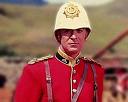
Posts : 1862
Join date : 2009-03-25
 |  Subject: 20,000 Zulus at Isandlwana Subject: 20,000 Zulus at Isandlwana  Tue Apr 06, 2010 10:43 pm Tue Apr 06, 2010 10:43 pm | |
| Has it been confirmed that there was 20,000 Zulus at Isandlwana. I was reading on a website that there was 35,000. How has it been determined that there was 20,000 what resource's were used. Or was a logical mathematical system used. If so what was it. I have always believed that there were 20.000 Zulu’s now I’m starting to doubt it.
Help wanted to restore my faith in the History Books !! Was there 20,000 - 35,000 more or less.
Thanks in advance.. |
|   | | John
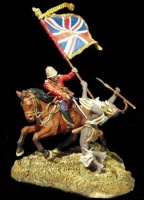
Posts : 2558
Join date : 2009-04-06
Age : 61
Location : UK
 |  Subject: Re: 20,000 Zulus at Isandlwana Subject: Re: 20,000 Zulus at Isandlwana  Tue Apr 06, 2010 11:07 pm Tue Apr 06, 2010 11:07 pm | |
| |
|   | | old historian2
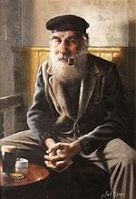
Posts : 1093
Join date : 2009-01-14
Location : East London
 |  Subject: Re: 20,000 Zulus at Isandlwana Subject: Re: 20,000 Zulus at Isandlwana  Tue Apr 06, 2010 11:21 pm Tue Apr 06, 2010 11:21 pm | |
| It gets worse.
Isandlwana 1879 The great Zulu victory.
Author: Ian Knight
Illustrator: Adam Hook
About this book
The battle of Isandlwana fought on 22 January 1879 was the greatest defeat suffered by the British Army during the Victorian era. A Zulu army of 24,000 warriors had moved undetected to within striking distance of the British camp in the shadow of Isandlwana Mountain. From the start the 1,700 defenders underestimated the danger descending upon them. They were swept aside with horrifying speed and the final stage of the battle consisted of desperate hand-to-hand fighting amid the British camp. Over 1,300 men were killed; scarcely 60 Europeans survived. Ian Knight employs new archaeological and historical research to provide a completely new interpretation of the course of the battle. |
|   | | littlehand
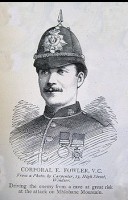
Posts : 7076
Join date : 2009-04-24
Age : 55
Location : Down South.
 |  Subject: Re: 20,000 Zulus at Isandlwana Subject: Re: 20,000 Zulus at Isandlwana  Tue Apr 06, 2010 11:28 pm Tue Apr 06, 2010 11:28 pm | |
| From Lieutenant - General Commanding South Africa to the Right Honorable the Secretary of State for War
Information received from Umtegolalo, a Zulu well known to Mr. Longeast, Interpreter to the Lieutenant-General, found wounded at Rorke's
Drift on the 23rd January.
Statement made by Natives regarding the Action of the 22nd January, at the Sandhlwana Hill. Eye-Witness accounts
“The army consisted of the Undi Corps, the Nokenke and Umcityu Regiments, and the Nkobamakosi and Inbonambi Regiments, who were severally about 3000, 7000, and 10,000 strong, being the picked troops of the Zulu army”
Total 20,000
Source: Northeast Medals |
|   | | 90th
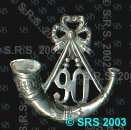
Posts : 10890
Join date : 2009-04-07
Age : 68
Location : Melbourne, Australia
 |  Subject: how many were there. Subject: how many were there.  Wed Apr 07, 2010 1:48 am Wed Apr 07, 2010 1:48 am | |
| hi all. I"m more than happy to go with the zulu estimation of their own army for the simple fact , how would the british have counted them for a start !. If anyone had an idea of how many zulu"s there were , surely it is them .  . You can rest assured the zulu"s had no idea of the number of troops they were attacking whereas the British had a rough idea how many they had defending the camp. Hope this makes sense . :) . cheers 90th. |
|   | | joe

Posts : 600
Join date : 2010-01-07
Location : UK
 |  Subject: Re: 20,000 Zulus at Isandlwana Subject: Re: 20,000 Zulus at Isandlwana  Wed Apr 07, 2010 6:42 am Wed Apr 07, 2010 6:42 am | |
| hi all. sanibona!
ive read books and websites that have estimations ranging from 12,000 up to 50,000+. I dont think there is a way to determine that amount of zulus there were.
I too am still doubting the amount of zulus that attacked the camp at Isandlwana. Maybe it is just a way of covering up that terrible defeat to avoid humiliation. Though, this is just a though
thanks joe |
|   | | Ken Gillings
Posts : 205
Join date : 2009-10-20
Age : 76
Location : Pinetown, KwaZulu-Natal, South Africa
 |  Subject: Re: 20,000 Zulus at Isandlwana Subject: Re: 20,000 Zulus at Isandlwana  Fri Apr 09, 2010 9:00 pm Fri Apr 09, 2010 9:00 pm | |
| 28 000 assembled at Ondini for the purification of umnyama and first fruits ceremony.
Once across the White Mfolozi River, 4 000 warriors under the command of Chief Godide kaNdlela Ntuli left the main army with the uMxhapho Regiment to deal with the Coastal Column under Col C K Pearson and were reinforced by elements of local amabutho comprising mainly the iNsukamngeni, iQwa, uDududu, iNdabakawombe and other coastal clans, bringing their strength to approximately 6000.
That means that 24 000 warriors continued to the Ngwebeni valley. 4 000 formed the reserves and were made to sit with their backs to the battle of Isandlwana (so they wouldn't become involved), which leaves 20 000 who attacked the camp.
Ken |
|   | | Mr Greaves

Posts : 747
Join date : 2009-10-18
 |  Subject: Re: 20,000 Zulus at Isandlwana Subject: Re: 20,000 Zulus at Isandlwana  Fri Apr 09, 2010 9:59 pm Fri Apr 09, 2010 9:59 pm | |
| Thanks Ken. For putting the record straight. |
|   | | | | 20,000 Zulus at Isandlwana |  |
|
Similar topics |  |
|
| | Permissions in this forum: | You cannot reply to topics in this forum
| |
| |
| |
